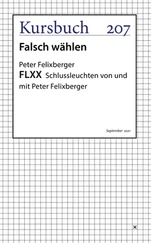“That wouldn’t be responsible,” Weston said. He wasn’t alone in his opinion. Other seismologists, including several prominent members of the USGS, supported him loudly. The atmosphere was tense as Weston argued for restraint.
“But Goddammit, you’re not answering the question. Give me a yes or no answer here, Paul.”
Steve Draper, who’d sat in the back of the room, taking copious notes, suggested they temporarily adjourn the meeting.
“Why don’t we all get something to eat. Try to rest, then get back here in, say, one hour. We’ll go over the numbers again. And our options—if we have any. The president’s eager to get your thinking on further seismic activity.” He studiously avoided the word “prediction.”
Draper took Atkins and Elizabeth aside. “I’d like you to meet someone. He’s got some thoughts on the situation. You might find them provocative.”
He led them to a small conference room in the back of the building. “Atkins, Elizabeth, this is Fred Booker,” Draper said.
NEAR KENTUCKY LAKE
JANUARY 15
5:10 P.M.
LAUREN MITCHELL WAS WORRIED. HER GRANDSON had been gone nearly five hours. He’d left with the shotgun to go hunting. They needed meat, and the boy was a good shot. He’d often killed rabbits and squirrels for the table. The year before, he’d shot his first deer, a two-point buck.
Lauren had made him promise to stay away from any roads. If he heard any cars or trucks coming, she told him to take cover. The roads weren’t safe. Too many bushwhackers were traveling the countryside. In the quake zone, law enforcement had become largely a personal matter. Residents had been urged to do whatever they thought necessary to protect themselves and their property.
Almost as troubling were the reports of unusual animal behavior—stories about wild dogs, cattle, and horses that had gone out of their heads. Lauren still remembered her great-grandfather telling her about the New Madrid quake of 1895. How two days before it hit, all the chickens and dairy cattle on their farm had become frantic. A big Rhode Island red that had never shown any hostility had suddenly attacked him in the hen shed, slashing him with a talon. She remembered how he’d rolled up his shirtsleeve to show her the white scar that ran from his elbow to his wrist.
Lauren thought about that story and about what could happen to Bobby. She was angry with herself for letting him go out alone. They had enough food to last for several more weeks. She never should have let him talk her into going hunting by himself.
She was getting ready to put on a coat and go looking for him when she heard him shouting.
He was running through corn stubble in the field behind their house. He was panting, his breath forming white clouds as he jogged up a low hill. Three large rabbits dangled from his belt. He wore a blue stocking cap and carried the .410 shotgun.
When she stepped out on the back porch, he waved and shouted: “It’s like… a… canyon!”
Struggling to get the words out, he doubled over at the waist and tried to fill his lungs. He dropped his shotgun and the rabbits.
“It’s down by Millet Creek,” he said, still gasping for air.
“What’s down at the creek?” Lauren asked. He’d gone farther than she’d thought. The creek was almost five miles away. It meandered on a crooked line into Clark’s River, which emptied into the Tennessee near Paducah.
“A deep crack in the ground,” Bobby said. “It must have opened up in the quake. You’ve got to come look. It must be a mile long. I couldn’t see the bottom.”
MEMPHIS
JANUARY 1612:15 A.M.
WALT JACOBS SAT BACK IN HIS CHAIR, EYES FIXED straight ahead and shook his head.
“I don’t want to hear any more of this,” he said. “It’s lunacy.”
Steve Draper had asked him to join Atkins and Elizabeth Holleran in an equipment room for a private conversation. It was hard enough for him to focus: he was still waiting for word on his wife and daughter. The two graduate students who’d volunteered to go to his home hadn’t returned, and he was very worried about them as well as about his family. He’d been sleeping less than four hours a day, and his jittery nerves were ready to snap. He had no patience for crazy ideas.
Jacobs rarely lost his temper, but he was as angry as Atkins had ever seen him.
They’d just listened to Fred Booker explain his theory about using a nuclear charge to defuse the earthquake sequence.
Booker was hardly aware of Jacobs’ increasing hostility. Deep in thought, he was standing at a blackboard, using a piece of broken chalk to sketch the fault zone Guy Thompson had displayed graphically. He was working rapidly, making quick, sharp strokes on the board. Chalk fragments were flying.
“If this is the most seismically active segment, I’d make it my target.” He circled the area then drew a horizontal line right through it. “That’s where I’d sink the shaft. We put the bomb down as deep as we can go. As deep as we have time for. The size and location, of course, would all have to be precisely calculated. I’d let you people—”
Jacobs had had enough. “We’re in the middle of a catastrophe, and you’re wasting our time with this,” he said, knocking over a chair as he stood up. “We are not going to set off a nuclear explosion. It’s not even worth discussing.”
Atkins said, “How would we know a nuclear charge wouldn’t actually precipitate another big quake? Push it over the edge.” That was the very thing they wanted to avoid and to his way of thinking was the most dangerous element of Booker’s startling proposal. They had absolutely no empirical evidence to fall back on. The thing had never been done. He couldn’t buy this at all.
Booker said, “I can’t answer that. There’s going to be a risk. And I don’t underestimate that. All I’m saying is that if you people can tell me how much energy needs to be released along the fault to reduce the strain energy, I can design and fire a charge that might do the job.” He looked at Jacobs. “Throwing chairs around isn’t going to solve our problem. It never did out at the Nevada Test Site.”
“To hell with you,” Jacobs said. “So you know how to blow big holes in the ground. Goddammit, what’s the point?”
Booker stood right in front of Jacobs and stared at him. “The point is we can do something,” he said in a loud, frustrated voice. “We can try to do something. We don’t have to sit here and look at our precious data and get clobbered again.” Booker took off his goggles and threw them across the room.
Draper ordered Jacobs and Booker to cool off.
There had long been speculation that a nuclear blast, properly located, might be able to defuse an earthquake. Atkins was aware of it, but that’s all it was. Speculation. No reputable geologist had ever seriously suggested such a thing beyond raising it as a hypothetical. It was a fringe issue—too far-out to be seriously debated, too far-fetched. On the other hand, no one doubted a nuclear bomb could trigger an earthquake. There’d been too many examples. Some of the quakes had been fairly substantial, in the magnitude 5 range, perhaps even a little larger.
Elizabeth said, “Wasn’t there discussion that a Soviet underground test may have set off a mag 7 quake in Iran back in the late seventies?”
“I’m familiar with that earthquake,” Atkins said. He’d visited Tabas, a city in remote western Iran, where at least 25,000 people had been killed. “The Soviets had set off a 10-megaton blast at Semipalitinsk about thirty-six hours before the quake. But no one has ever established a definitive cause-and-effect link between the two events. And that’s the problem with all the antibomb people who worry that underground tests have made the earth more vulnerable to major earthquakes. There’s no hard evidence. It’s an emotional argument without any scientific basis in fact.”
Читать дальше












